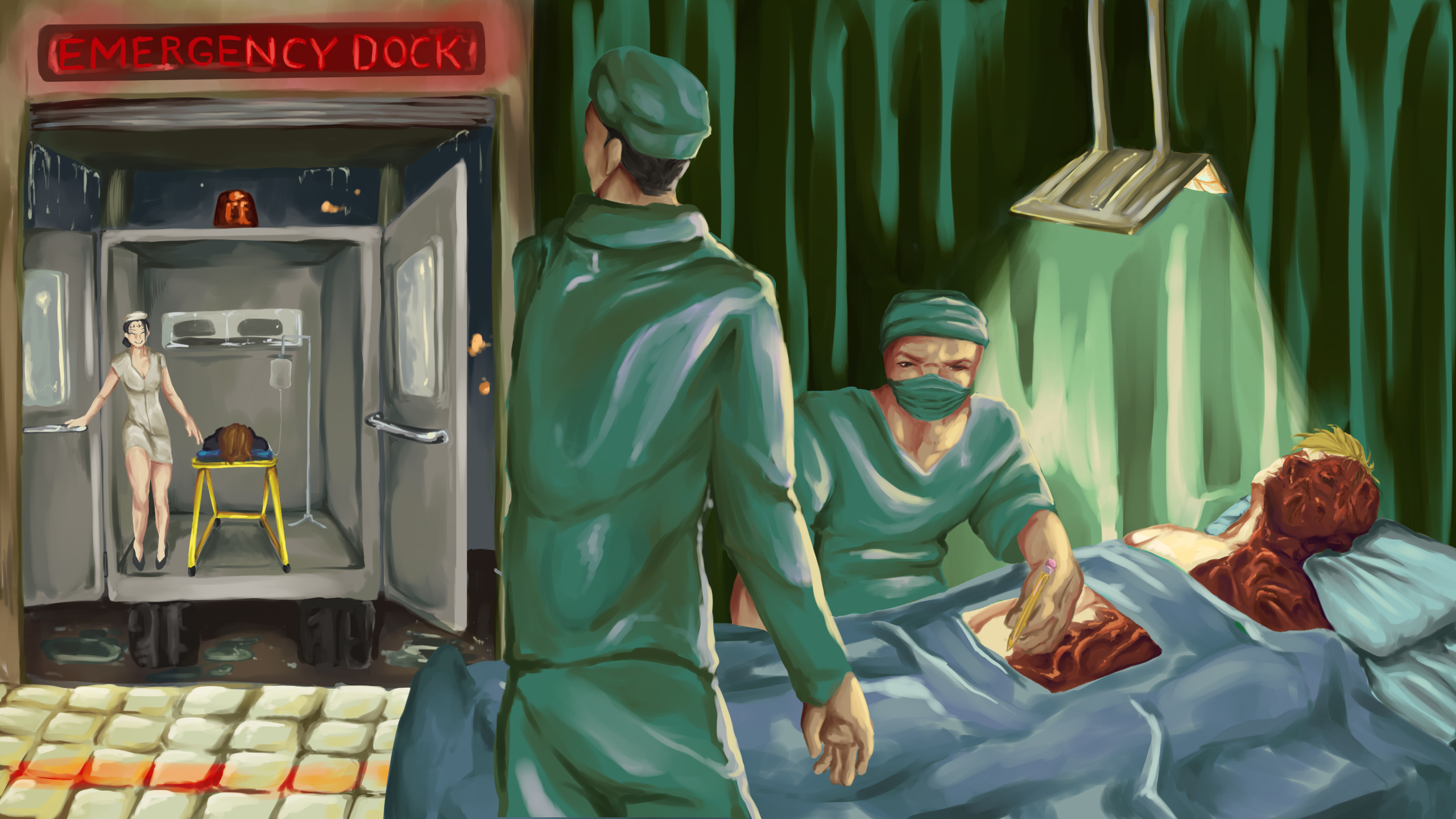Jujutsu Controversy: How Jujutsu Kaisen Brought to Light the Toxic Working Conditions of Animators
Illustration by Amelia McPartlin
From boba shops, buses, merch, tweets, tiktoks, and even Megan Thee Stallions instagram, this past 2023 it was almost impossible to avoid some sort of mention of season two of a popular shonen anime: “Jujutsu Kaisen”. And no, there will be no spoilers in this article.

Images courtesy of MAPPA
This popular anime is only growing in popularity due to its colorful cast of characters, immersive worldbuilding, and, most notably, its gorgeously constructed fights and animation. However, the artistic ingeniousness of “Jujutsu Kaisens” anime adaptation has proven to come with a heavy price. With the season beginning to air in July, it appeared that, as the show went on, animators who worked on the project only continued to voice their disappointment and distress caused by the working conditions at MAPPA. Many of which took to Twitter (or X) to do so.
One animator shared this message:
HoneHone’s message translates roughly to the following:
“The worst thing is when all the staff works hard to complete a schedule that would normally be impossible to meet in time, and the people above them look at the results and think, ‘I can’t say anything!’’ and fail to make improvements. I guess the cycle started when I completed one movie in four months…”
Rumors even emerged saying that MAPPA had approached animators with an NDA regarding the conditions of the show.
Another artist, Itsuki Tsuchigami, shared the following:
While this is only one side of the controversy, there are still animators and contracted artists who report having pleasant experiences with MAPPA, despite the company’s reputation (for both JJK and other projects) of short deadlines, abundance of work, and overall stressful working conditions.
A recent evolution in the controversy of studio conditions is a statement from an experienced animator, Mamoru Yokoto, who worked on popular anime in the past such as “Death Note” and “One Piece”.
Yokoto’s tweet, which was in regards to overseas contractors sharing disappointment in MAPPAs working conditions, stated that it was the responsibility of the contracted animator to disclose workload and deadlines prior to committing to the project. He also brings up the conflict of financial relations when it comes to outsourcing animation to overseas animators. An issue that is only increasingly relevant, as Japan’s yen has notably decreased in value, and working wages are relatively low.
There are many sides to this controversy, with Yokoto’s perspective certainly having its points. As an artist, it is important to manage one’s own time and skillset, and avoid committing to projects that you can not fulfill. However, on the other side, the proposals of jobs with such little time and high effort should ideally not even be offered or even exist in the first place. It is just as much the responsibility of the studio to structure their schedule and team size to avoid requiring so much commitment out of their employees.
Overall, the issue at hand is not limited to just “Jujutsu Kaisen”, MAPPA, or just anime overall. The working conditions of animators globally has been an increasingly popular debate in recent years. Whether this can be attributed to an increase of popularity and demand for animated media, a decrease of consideration for the workers, or some other countless factors, it is undeniable that this issue is getting more and more media traction. Even in recent American projects such as “Spider-Man: Across the Spider Verse”, despite the large fan following and appreciation, there are constantly reports coming out about these modern artistic ingenuities being the result of stressful working conditions.
Is this simply an inevitable aspect of the job – with the higher the demand for films, the higher the quality, the more stress? Proposed solutions have been circling, with the most popular of many being the unionization of animators and other visual artists. It seems the future of the industry as a whole is up for a redesign, but whether or not it goes into effect, is in the hands of the artists themselves.
